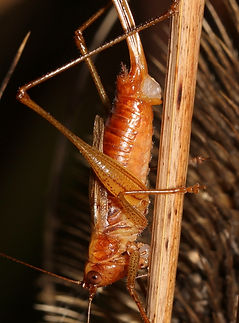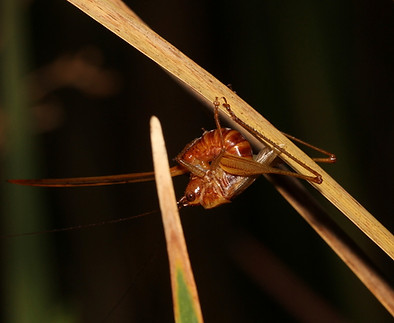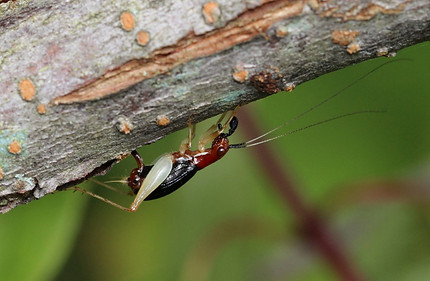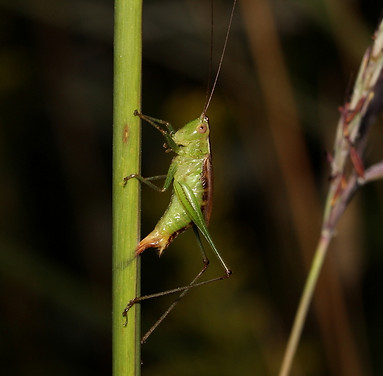Reproduction and ovipositing:
what you’ll see and likely won’t see

Broad-winged Tree Crickets
If you spend time in the field during singing insect season, you will encounter mating tree crickets. I don’t see other crickets creating next year's singers, and I only see female katydids' post-copulation spermatophores. Mating tree crickets, however, seem to be everywhere.


Black-horned or Forbes's Tree Crickets
Two-spotted Tree Crickets
The female is the one on top, and after mating she will eat a sweet substance from the male’s metanotal gland while the spermatophore is absorbed. You can read about this process in Songs of Insects under Biology (scroll down to "Courtship, Mating, and Life Cycle.")
You’ll likely notice plenty of evidence of katydid reproductive activity. Males deposit a translucent spermatophylax that consists of a spermatophore surrounded by a nutritious substance that the female will eat while the spermatophore itself is being absorbed. Here’s what to look for:

Scudderia female, probably Curve-tailed Bush Katydid

Closer view of the spermatophylax



Long-tailed Meadow Katydid eating the spermatophylax
I periodically see meadow katydid females and especially tree cricket females ovipositing. You may as well. It’s fascinating to watch how a cricket or katydid’s ovipositor is designed for the location her species will oviposit. Here are examples, and I’ll include others in some of the species pages.


Black-legged Meadow Katydid's ovipositor in a dried cattail stem

Broad-winged Tree Cricket ovipositing

Black-sided Meadow Katydid
ovipositing in a cattail stem

Handsome Trig ovipositing in buckthorn
